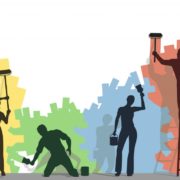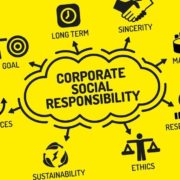Excessive Collaboration leads to Mediocrity
Collaboration has always been sought out in order to resolve problems, improve efficiency and even raise the office’s level of engagement. It is often seen like the perfect ingredient which transforms a group of people into a team. Collaboration offers people the possibility to explore various ideas and perspectives and share their views and experiences with the others. Nonetheless, besides all these obvious benefits, there are also downsides to over-collaborating. It usually leads to all the work being completed by the more productive workers. And a study conducted by Applied Psychology has come to aid this idea.
A work environment where there is a whole lot of collaboration will make your top performers, innovators and hard-workers who will undoubtedly feel used, miserable and socially isolated. The vast majority of average employees do not regard top performers as mentors or role models, but perceive them as threats, because they feel that they might be replaced by them or that they are the reason why their work might not be appreciated. Instead of focusing on their own efficiency, mediocre employees may also start spreading hurtful rumours about top performers, try and sabotage them, or even attempt at stealing their work and get credit for it.
Social isolation is one of the most used techniques that occur at the workplace. It is especially hard for introverted top performers who operate in open-plan environment. Given this situation, introverts are better off working from home, deepening the gap between themselves and their colleagues. Naturally, this leads to more backstabbing and gossip. Obviously, this represents the number 1 reason for top talents leaving companies. They simply cannot accept an organisation which embraces mediocrity.
This shouldn’t be considered as a jab taken towards teamwork; complex projects require a team in order for it to be a success. But for teams to be successful, they require a leader, a leader who can thwart any attempt of separating and slandering a top performer. More often than not, teams require formally ranked leadership rather than more collaboration opportunities. And maybe it is time for more private spaces to appear in order to encourage better social interaction.
There are a few tell-tale signs that reveal that your coworkers are over-collaborating. Here are the most important signs you should keep an eye on:
- Consensus is achieved but time-loss is immense
This is one of the most common problems when people are over-collaborating. Every important decision requires too much input and buy-in, meaning it takes way too long to happen, and even longer to implement. The size of the team can depend, but there are some areas of the project that must have rules that are intangible. People understand that some rules or ideas cannot be changed and if they have a certain degree of input on a few ideas, automatically they will feel ownership.
- Compromising as a solution
This represents the single most tremendous problem with excessive collaboration. When too many people are involved, this situation could potentially lead to the feeling that everyone at the table should have their opinions included in the decision making process and afterwards reach a consensus. The conclusion of collaboration is to reach the best possible outcome. People tend to compromise that outcome when too many ideas and opinions are being introduced in order to make people feel that their opinion is being valued. Managers need to realise that the majority of people crave to be heard and validated and that is not the target of collaboration. In this scenario, managers have to listen and offer a concrete reason why people’s opinions won’t be part of outcome.
- Involving people in every possible decision
This represents another problem that arises from excessive collaboration. When managers are involving too many people in absolutely every single decision, the final outcome will suffer due to the fact that if people are not involved in the decision making process they feel cheated and underappreciated. The truth is: not every decision requires the entire be department be present for debate. Some decisions are urgent and crucial, and collaboration would just take too long. Some decisions cannot include other members of staff because they do not possess the necessary information, due to confidentiality agreements, lack of resources or experience.
Ideally, people should start understanding the fact that collaboration is useful, but the world we live is far from perfect. Decisions need to be made, but collaboration will still be useful where the situation affords it. This is what people need to understand…
Great People Inside provides easy-to-use tools and processes to attract, assess, match, select, onboard, manage, develop, benchmark and maintain workforces anywhere in the world.
We help you find the right talent, the best fit for the job and your organisation. It requires deep knowledge of your own organisation’s culture and keen understanding of the candidate’s personality, strengths, interests, work style and other characteristics. The GR8 Productivity Gap tool is excellent at showcasing the evolution of any given employee over time. By contrasting two assessments made before and after training, it allows you to analyse both your employees’ development and their involvement in the process as well.
Sources:
http://hr.toolbox.com/blogs/performance/three-signs-youre-collaborating-too-much-74191











